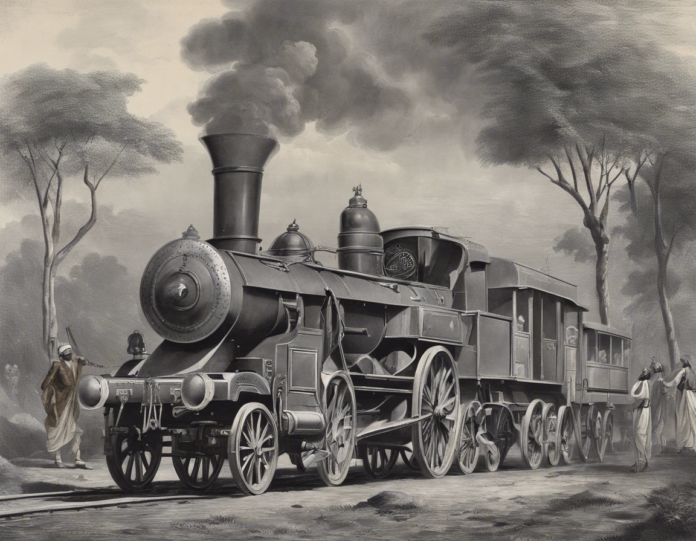Introduction
The Rebellion of 1857, also known as the Indian Mutiny, the Sepoy Mutiny, or the First War of Indian Independence, was a significant uprising against British colonial rule in India. This momentous event in Indian history carries immense cultural, social, and political significance, shaping the course of the Indian freedom struggle. Let’s delve deeper into the various aspects of the Rebellion of 1857 and analyze its impact on India’s fight for independence.
Background and Causes
- Historical Context: The British East India Company began its colonial expansion in India in the 18th century, gradually asserting control over the subcontinent. By the mid-19th century, the Company’s policies had adversely affected various sections of Indian society.
- Economic Exploitation: The Company’s economic policies caused widespread poverty and disenchantment among Indians. Heavy taxation, land annexations, and the imposition of new laws all fueled resentment against British rule.
- Social and Religious Issues: The British disregarded Indian customs and traditions, leading to unrest among the populace. The introduction of new technologies, such as the Enfield rifle with its controversial cartridges greased with animal fats, offended religious sensibilities, particularly of the Hindu and Muslim sepoys.
- Political Grievances: Discontent among Indian rulers, who were marginalized by the Doctrine of Lapse and Subsidiary Alliance policies, further stoked anti-British sentiments. The annexation of Awadh in 1856, a culturally significant region, served as a catalyst for the Rebellion.
The Outbreak of the Rebellion
- Primary Triggers: The spark that ignited the rebellion was an incident in Meerut on May 10, 1857, where Indian sepoys (native soldiers) refused to use the controversial cartridges and were subsequently court-martialed and imprisoned.
- Spread of Rebellion: The unrest quickly spread to other parts of North and Central India, encompassing regions like Delhi, Kanpur, Lucknow, Jhansi, and Bihar. The rebels, comprising sepoys, peasants, landlords, and disaffected nobles, united in their opposition to British rule.
- Leadership: The rebellion saw the emergence of notable leaders such as Nana Sahib, Rani Lakshmibai of Jhansi, Bahadur Shah II, Tantia Tope, and Kunwar Singh, who played pivotal roles in organizing and leading the uprising.
British Response and Suppression
- Initial British Reactions: The British initially underestimated the scale and intensity of the rebellion, leading to a chaotic and disorganized response. However, they swiftly mobilized reinforcements and adopted ruthless measures to quell the uprising.
- Siege of Delhi: The recapture of Delhi in September 1857 marked a turning point in the conflict. British forces, bolstered by reinforcements, laid siege to the city and eventually overpowered the rebels, leading to widespread bloodshed and destruction.
- Massacres and Reprisals: The British retaliated with brutal force, committing widespread atrocities and reprisals against Indian civilians and rebels. Cities like Kanpur and Lucknow witnessed significant bloodshed as the British sought to crush the rebellion with an iron fist.
Legacy and Impact
- End of the East India Company: The failure of the Company to handle the rebellion effectively prompted the British government to take direct control of India in 1858 through the Government of India Act, effectively ending the Company’s rule in the subcontinent.
- Policy Reforms: The rebellion prompted the British to reassess their policies in India, leading to the abolition of controversial practices like the Doctrine of Lapse and the introduction of measures to appease Indian sentiments.
- Nationalist Awakening: The rebellion served as a watershed moment in India’s struggle for independence, inspiring future generations of freedom fighters and nationalists. It laid the groundwork for a unified national movement against British imperialism.
- Cultural Resonance: The heroes of the rebellion, such as Rani Lakshmibai and Mangal Pandey, became iconic figures in Indian history, symbolizing the spirit of resistance against oppression and colonialism.
FAQs
- What were the main causes of the Rebellion of 1857?
-
The Rebellion of 1857 was fueled by a combination of economic exploitation, social and religious grievances, and political disenchantment with British colonial rule.
-
Who were some of the key leaders of the 1857 uprising?
-
Notable leaders of the rebellion included Nana Sahib, Rani Lakshmibai of Jhansi, Bahadur Shah II, Tantia Tope, and Kunwar Singh.
-
How did the British respond to the rebellion?
-
The British responded with military force, conducting brutal reprisals and massacres to suppress the uprising and reassert control over the rebellious regions.
-
What was the impact of the Rebellion of 1857 on Indian history?
-
The rebellion led to the end of the East India Company’s rule, ushered in policy reforms, inspired nationalist movements, and left a lasting cultural legacy in India.
-
Why is the Rebellion of 1857 considered a significant event in Indian history?
- The Rebellion of 1857 marked a pivotal moment in India’s struggle for independence, galvanizing resistance against British imperialism and shaping the trajectory of the freedom movement.
